Top 8 Greek Museums: The Glory of Byzantium
Catalogue
- Benaki Museum
- Ilias Lalaounis Jewellery Museum
- Museum of Greek Folk Musical Instruments
- Goulandris Museum of Cycladic Art
- National Archaeological Museum
- Epigraphical Museum
- Acropolis Museum
- Mosque of Tzistarakis
Show More
Discerning to people and travellers, Greek museums give an insight into different aspects of life in Greece Greek culture is deep and symbolic in nature, and Greek history is most spoken about. Greek habitat from pre-historic ages, Greek culture and the lifestyle of Greece have fascinated people all over the world. The enigma and glory of Greek culture, the glory of Byzantium, coupled with the modern history of the country, can tickle the imagination of the tourists and locals alike. The country of Greece is a large exhibition area where you can experience centuries, influences and different facets of everyday life. Culture is well protected and followed in Greece, and if you happen to visit any part of , you will witness how well it is observed, maintained and passed on. From utensils to simple everydayGreecehttps://www.trip.com/travel-guide/greece-100036/ tradition, you can find a slice of it all in museums, galleries and exhibits. Treasures from different eras and times dating back to history keep getting excavated that bring new discoveries to light. The wealth, depth and significance of the Greek culture are on display in the several museums of Greece which are located strategically in the country. Greek Museums are a storehouse of memory and help visitors reminisce the old era and its influences. The below is a curated list of Greek Museums that will help you get a peek into the deep history of Greece and ancient civilizations.
Antonis Benakis, born in the late 19th century, was a politician’s son born in Alexandria. In 1930, Antonis Benakis gifted the country with one of its finest museums. It is made up of three floors and showcases impeccable and rare treasures starting from the Bronze Age to World War III. The Byzantine icons and the extensive collection of Greek regional costumes are gorgeous and exquisite. You can also see the view the complete seating rooms from Macedonian mansions with their intricate and detailed carvings and paintings. The keen eye of Benakis has even made agricultural tools displayed look stunning. The wide array of a variety of displays in the Benaki museum which include the Classical Greek masterpieces gives viewers with different interests something to muse over. The opening hours of the museum are longer and an added bonus. Note that the museum has two other major branches one at 138 Pireos Street for contemporary art and the other in Keramikos which is the Museum of Islamic Art. There are several other small museums like The Ghika Gallery, Mentis Passementerie, Toy Museum and the Yiannis Pappa Studio. An entry fee costing 25 Euros is valid for three months. Benaki Museum is one of the iconic Greek museums that must feature in your museum visit list.
Where: Koumpari 1, Athina
Opening Times: Sunday 9:00 am - 3:00 pm, Wednesday 9:00 am - 5:00 pm, Thursday 9:00 am - 11:30 pm, Friday 9:00 am - 5:00 pm, Saturday 10:00 am - 5:00 pm
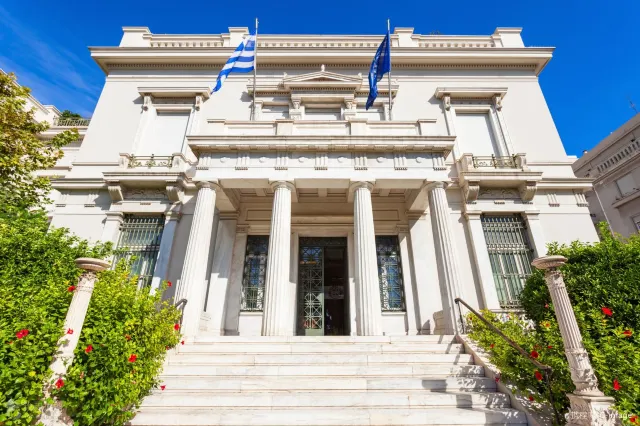
Well, fashionistas can feast their eyes and soul at this museum. Ilias Lalaounis adorned the likes of Elizabeth Taylor and Melina Mercouri and is the sole person responsible for creating a classically inspired gold jewellery based on the singular bold Greek style. The 4500 pieces of exhibits that the museum boasts of draws heavily on Greek influences- pre-Columbian motifs to wildflowers. There is also a hands-on jewellery studio on the ground floor and a tiny gift shop to indulge. The current work of the family is displayed at a shop with the name of Ilias Lalaounis and at the Zolotas, which is another family business near the Syntagma. This is one of the few museums in the world which is dedicated to contemporary jewellery and decorative arts. The visionary collections are inspired by nature, medicine, astronomy and modern technology. Housed in a neo-classic 1930’s building, the Ilias Lalounis Jewelry Museum is another one of the classic Greek museums that are located at the foothills of the Southern slope of the Acropolis. The museum was renovated to create an international centre for the ancient art of gold-smithing and other traditional crafts. The permanent exhibits of jewellery and decorative objects resonate the remarkable vision and success of Lalaounis.
Where: 12 Kallisperi N. | Adjacent to the New Acropolis Museum, Athens 117 42, Greece
Opening Times: Tuesday 9:00 am - 3:00 pm, Wednesday 9:00 am - 9:00 pm, Thursday and Friday- 9:00 am - 3:00 pm, Saturday 9:00 am - 9:00 pm
This Greek Museum is housed in a quaint and elegant nineteenth-century mansion that was erected in 1840. The Museum of Greek Folk Musical Instruments displays close to 1200 unusual musical instruments. All the exhibits demonstrate the chronology of Greek music and its trajectory over the past 5000 years. The large collection is spread across the sprawling three floors of the museum. The instruments displayed are grouped according to the family-like percussion, windwood, strings, brass and keyboard. The exhibits on the various levels also display the numerous tambourines and percussions made using dried mud, bagpipes, flutes and violins. Some are really intriguing and will pique your interest, especially the Greek Shepherds’ flutes made of goatskin. Some other exquisite pieces include the cane flutes covered in snakeskin and flutes made with eggs of birds that are predators. Visitors also get a chance to marvel at the box lyres and baglamas which is a traditional Greek string instrument made of wood or tortoiseshell. As you walk around the museum examining the exhibits, you can also listen to short pieces of the instruments with headphones. The Museum of Greek Folk Musical instruments is not a widely frequented one, but we would recommend it if you are a music lover and have an ear for sounds. It is entertaining and equally fascinating to discover some rare and bizarre instruments. The entry fee is free, and it is not so big that you cannot cover it.
Where: Diogenous 1-3 | Plaka, Athens 105 56, Greece
Opening times: Sunday 10:00 am - 3:00 pm, Tuesday - Thursday 10:00 am - 3:00 pm, Friday - Saturday 7:00 pm - 3:00 pm
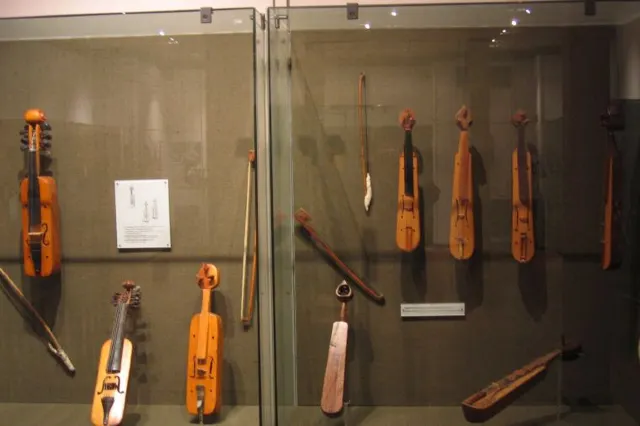
Inaugurated in 1986, the Museum of Cycladic Art in Athens features an artwork collection from the Cyclades Islands which is over 5000 years old. This Greek Museum is also famous for displaying countless and timeless pieces of art from Cyprus and Ancient Greece. The museum has a collection of over 3000 works of art from Cyprus, Ancient Greece and the Cyclades. The exhibits traverse the various cultures that grew, flourished and progressed from the fourth century BC until the sixth century AD in the Aegean Sea islands and the Mediterranean region. The museum is well-laid and organised where the items are displayed by themes as below:
Cycladic Culture: The first floor of the museum features over 350 sculptures, vessels, figurines which are made of stone, marble, bronze, clay and marble. These objects are typical to the Cycladic culture from the Early Bronze Age.
Ancient Greek Art: The second and fourth floor is home to almost 4000 artefacts that date to between 2000 BC and the fourth century AD. All the exhibits, including jewellery, vases, glass-made objects and weapons are from Central Aegean and represent the presence of Classical culture in the islands.
Cypriot Art: The third floor is completely dedicate to relics ( about 500 objects made of stone, silver, gold, bronze, marble and clay) found in Cyprus and date back to Chalcolithic and the Modern periods.
Daily Life in Ancient times: The fourth-floor displays about 142 items from the Antiquity age. Each item is labelled with an explanation for the visitor to dig deep into the subject and get familiar with how a day looked in the life of an Ancient Greek.
The Museum of Cycladic Art is one of the most interesting places with valuable exhibits and varied objects displayed with comprehensive information that will make the visit more interesting.
Where: Neofitou Douka 4, Athina 106 74, Greece
Opening times: Monday, Wednesday, Friday and Saturday: 10 am-5 pm, Thursday: 10 am-8 pm, Sunday:11am – 5 pm, Tuesday- Closed
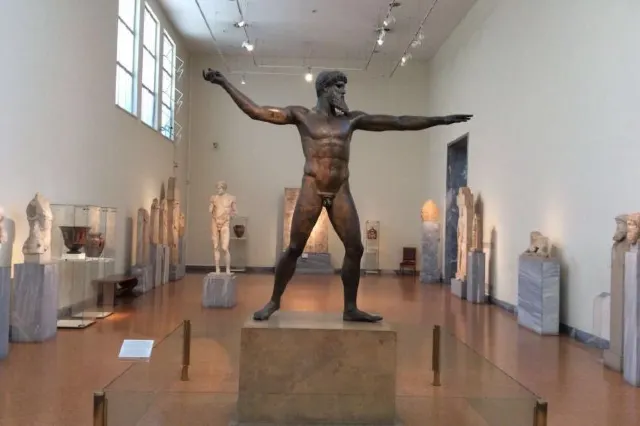
The National Archaeological Museum, founded in the nineteenth century, is one of the largest archaeological museums in Greece. This Greek museum is considered as one of the finest in the world owing to its exquisite collection of Ancient Greek art. Built between 1866 and 1889, this was initially called the Central Museum. It was established to display the numerous findings which dated to the beginning of prehistoric age to the late Antiquity Age that was excavated in Athens and its surrounding areas. Over the years it houses objects from all over the country. The building was closed during the World War II period, and the pieces were placed in wooden boxes and buried to avoid the German troops from looting them. The museum re-opened when the war was over in 1945. The collection is displayed across the two floors and divided into various exhibits as below:
Prehistory Collection
Sculpture Collection
Vase and Minor Objects Collection
Metallurgy Collection
Various art collections from Ancient Egypt
The museum gives visitors a good idea of the Ancient Greek civilization and includes objects like pots carved out of stone, jewellery, ceramics, ivory, marble and glass. You can also find mummies and several golf funerary masks. The museum also has the most beautiful Greek antiquity gems which make it one of the most popular museums.
Where: 44 Patission Street, Athens 10682
Opening times: Monday 1:00 pm - 8:00 pm, Tuesday - Thursday 8:00 am - 8:00 pm, Friday 9:00 am - 8:00 pm, Saturday - Sunday 8:00 am - 8:00 pm

The Epigraphical Museum of Athens is one of the largest Greek museums. This Greek museum comprises of a collection of 14,078 inscriptions, mostly Greek that cover the period from early historical times to the Late Roman era. It is located on the south side of the National Archaeological Museum. This museum has tersely labelled shelves made of stones and the two newer sections give an insight into the Greek writing system and reveal pieces of history. The museum closely safeguards these priceless inscriptions that cover a large period in history. The sole purpose of the museum is to safeguard, conserve, protect, display and promote the epigraphical collections that it contains. It comprises photographic and impression archives in the specialised library. The museum is also currently running a project on building a digital catalogue so that it can be accessed digitally by future visitors.
Where: Tositsa, Athens, Greece
Opening Times: 08.00 am until 3 pm every day except Monday when it is closed.
Note – It is probably worth calling ahead of your visit to check the opening hours of the Epigraphical Museum, as they may be subject to change.
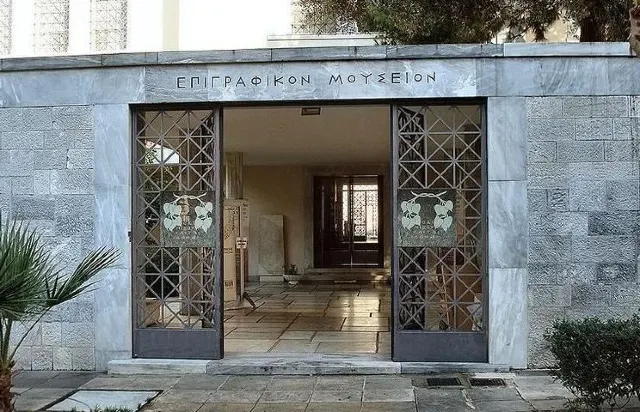
This Greek Museum, which is worth 130 million Euro, was designed by US-based architect Bernard Tschumi along with Greek architect Michael Photiadis to replace the small museum near the Parthenon. As you enter the museum, the glass floor will reveal the ruins of an ancient neighbourhood in Athens. The ground floor - Gallery of the Slopes of Acropolis is akin to climbing up the sacred hill when you can catch glimpses of the ruins on the glass floor below. The exhibits include painted cases and motifs of offerings from sanctuaries where gods were worshipped. It also includes recent objects that were found during the excavations of settlement and include two clay statues of Nike at the entrance.
The first floor of the Archaic Gallery is lit by the sun and bathed in natural light enhancing the sight of the authentic forest of statues and ritual offerings to Athena. You can find the stunning examples of 6th-century kore which are statues of young women in draped clothing and elaborate braids carrying a pomegranate, wreath or bird. The rare male statue found is that of a youth bearing a calf which belongs to 570 BC. You can also find bronze figurines and artefacts from temples that predate to the Parthenon and also some wonderful pedimental sculptures like Hercules slaying Lernaian Hydra and a lioness devouring a bull. You can also find the five Caryatids which are the maiden columns that held the Erechtheion.
The feather on the cap is the top floor which houses the Parthenon Gallery. It is a glass atrium that houses the temple’s 160m long frieze. The structure has been mounted as it was once and followed the layout of the building. You can stroll along with it and examine in with minute detail. The frieze depicts the Panathenaic procession and shows two groups splitting off and meeting on the east side of the peplos to Athena. You must watch the film that is screened on the floor to understand the frieze. You can also find the replicas of the so-called Parthenon Marbles which are interspersed between the originals that are golden-hued. You will also find metopes and sculpture from the Parthenon, a giant floral Akrotiri on which is a plaster replica and an ornate and decorative element that was once placed in the southern ridge of the museum.
Where: Acropolis Museum, 15 Dionysiou Areopagitou Street, Athens 11742
Opening times:
Winter season hours ( 1 November – 31 March)
Monday- Thursday: 9 am – 5 pm
Friday: 9am – 10pm
Saturday and Sunday: 9 am-8 pm
Summer season hours ( 1 April – 31 October)
Monday: 8am – 4pm
Tuesday to Thursday: 8 am – 8 pm
Friday: 8am – 10pm
Saturday and Sunday: 8 am – 8 pm
The museum is closed on 1 January, Easter Sunday, 1st of May and on 25th & 26 December
On Christmas Eve and New Year’s Eve ( 24 th December and 31st December)- the museum opens from 9 am-3 pm
On the full moon night in August and the European Night of Museums the museums operates until midnight.
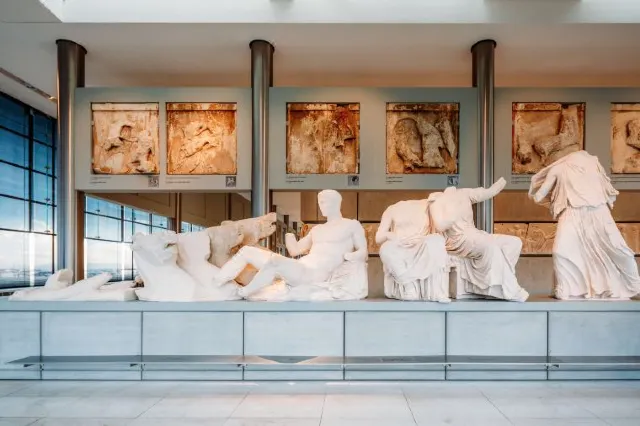
The building which is on the Southside of Monastiraki was built in 1759 and one of the few surviving testimonies of a tzami ( mosque) in Athens. It has not functioned as a mosque since Greece got independence, except to King Saud of Saudi Arabia when he visited the country in 1966. This Greek Museum is maintained by the Museum of Greek Folk Art and opens intermittently by exhibitions on a temporary basis. It is a beautiful little mosque set at the Monastiraki Square which is characterised by typical ottoman architecture. The mosque is a perfect example and testimony to the different cultures that ruled in Athens. Now functioning as an annex to the Museum of Greek Folk Art it is a popular sightseeing spot in Athens.
Where: Pandrossou 73-97, Athina 105 55
Opening Times: The museum is open 24 hours on all days from Sunday to Saturday
When you are in Greece, you are in a country that gives birth to civilization. A visit to the world-famous museums is a must. Explore the milestones of human art and creativity. You get a chance to get up, close and personal with the priceless and timeless exhibits. Discover the items used in ancient times and admire the representation of God and other people. A visit to the museum guarantees you a time where you can immerse yourself in the beauty and enchantment of the wonderful treasures of art- big or small. Just wander through the Greek Museums to experience the scale of achievements, discovery and the wide array of exhibits- most of which are famous throughout the world. All you need to do is step into one!
Trending Travelogues
Popular Trip Moments
Popular Travel Types
Popular Attractions
Popular Ranked Lists
Popular Destinations
Recommended Attractions at Popular Destinations
About











Site Operator: Trip.com Travel Singapore Pte. Ltd.







